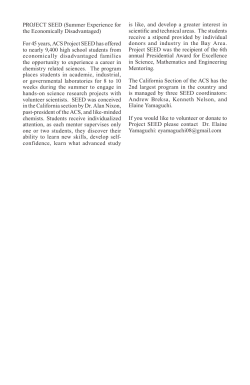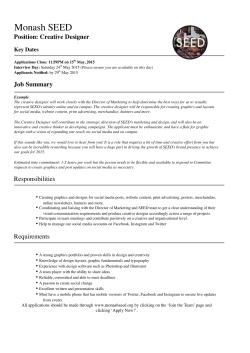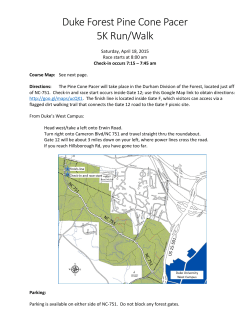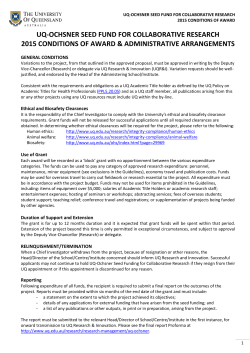
Optimization of Forest Regeneration Under Climate Change In Ontario
Where to Source and Replant Forests Under Climate Change? A case study of black spruce and white pine in Ontario Jing a a Yang , Dan b McKenney ,John b Pedlar and Alfons c Weersink Graduate Student at Dept. of Food, Agricultural and Resource Economics, University of Guelph, b Canadian Forest Service, Natural Resources Canada, Sault Ste. Marie, c Professor at Dept. of Food, Agricultural and Resource Economics, University of Guelph Why the research is important § In productive forest zones of Ontario, the average annual temperature could increase by 4.20C and annual precipitation could increase by 30% at the end of this century1. § Rapid climate change may outpace the rate of forest adaption. In the short term, locally adapted populations are likely to experience climates to which they are not well adapted2,3. § Given millions of seedlings need to replant in Ontario, there is concern about the appropriate means for successfully regenerating Ontario’s forests. What we found Take-home message Yield Response to Climate § Forest investors could benefit from alternative seed strategies § Temperature at planting site is the most important climatic factor Ø Best yield at site temperature of 4-60C for black spruce and 120C for white pine Note: MAT is short for mean annual temperature What motivated us § Given forest is sensitive to climate, how will climate change affect black spruce and white pine growth in Ontario? § Given the prospect of climate change and long-term nature of forest, what is the MOST economically efficient seed strategy (i.e., seed procurement and deployment) under rapid changing climate? What we did § Estimated tree response to climate using universal response function (URF)3 Height of seed source from population j at planting site i = f(climate variables at planting site, climate variables at seed source site) § Applied the URF into Faustmann model4 in assessing the net present value of regeneration selections under climate change Net present value (NPV)= discounted revernue from stumpage price and harvested volume - discounted regeneration cost To know more Jing Yang (519) 362-8629 jyang06@uoguelph.ca Species Seed Strategy Local Seed Seed Replantation Procurement Deployment White Pine Site Location Black Spruce Rotation Age (year) Volume (m3/ha) Net Present Value ($/ha) Site Location Rotation Age (year) Volume (m3/ha) Net Present Value ($/ha) North Bay ( 46.30N, -79.450W) 50 42.290N, -83.200W 44.040N, -83.790W 50 45 421 465 366 887 1009 951 Hearst (49.70N, -83.670W) 55 45.380N, -93.200W 51.130N, -74.200W 55 55 104 111 105 -60 -43 -58 Note: NPV ($/ha) Diversity for White Pine for Seed Procurement (red circle:North Bay) Note: NPV ($/ha) Diversity for White Pine for Seed Deployment (red circle:North Bay) Ø They could gain additional $17/ha for black spruce and $122/ha for white pine from sourcing seed from a specific location (i.e., seed procurement). Ø Replanting black spruce and white pine at a alternative planting site (i.e., seed deployment) could achieve a NPV that is $2/ha higher for black spruce and $64/ha higher for white pine than local replantation. § Under climate change, local seed is no longer ideal Ø Most suitable seed source for both species is from a relative southern region. Ø Highest yield for black spruce occurs at a region with mean annual temperature of 4-60C. Ø White pine grows best at a location with mean annual temperature of 120C. References 1) McKenney, D.W., J. Pedlar and G. O’Neill. 2009. Climate change and forest seed zones: past trends, future prospects and challenges to ponder. Forestry Chronicle 85(2): 258-266. 2) Morgenstern, E. K. 1996. Geographic variation in forest trees: genetic basis and application of knowledge in silviculture. Vancouver, BC: University of British Colombia press. 3) Wang, T., A. Hamann, A. Yanchuk, G.A. O’Neill and S.N. Aitken. 2006. Use of response functions in selecting lodgepole pine populations for future climate. Global Change Biology 12(12): 2404-2416. 4) Chang, S.J. 1984. Determination of the optimal rotation age: a theoretical analysis. Forest Ecology and Management 8(2): 137-147.
© Copyright 2025










